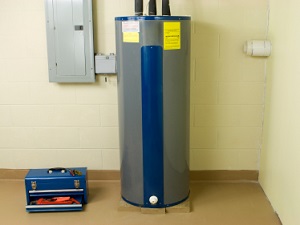Key Maintenance Tips for Your Home's Hot Water SystemTips on How to Keep Your Home's Hot Water System in Good Condition
Key Maintenance Tips for Your Home's Hot Water SystemTips on How to Keep Your Home's Hot Water System in Good Condition
Blog Article
This post further down involving How to Maintain a Hot Water Heater in a Few Simple Steps is particularly motivating. Read it for your own benefit and figure out what you think about it.

Warm water is essential for daily convenience, whether it's for a refreshing shower or cleaning dishes. To guarantee your hot water system runs effectively and lasts much longer, routine upkeep is key. This post provides functional tips and understandings on just how to preserve your home's warm water system to avoid interruptions and costly repair work.
Intro
Maintaining your home's warm water system could seem overwhelming, but with a couple of basic actions, you can ensure it runs efficiently for years to find. This overview covers every little thing from comprehending your warm water system to DIY maintenance pointers and knowing when to contact specialist help.
Significance of Preserving Your Warm Water System
Regular maintenance not just expands the lifespan of your hot water system but also ensures it runs efficiently. Ignoring upkeep can result in lowered efficiency, higher power bills, and even early failure of the system.
Indications Your Warm Water System Needs Maintenance
Recognizing when your hot water system requires attention can prevent major concerns. Look out for indications such as irregular water temperature level, unusual sounds from the heating system, or rusty water.
Purging the Hot Water Heater
Flushing your water heater eliminates debris buildup, improving efficiency and extending its life.
Monitoring and Changing Anode Rods
Anode poles protect against deterioration inside the container. Inspecting and replacing them when worn out is crucial.
Complex Issues Calling For Specialist Help
Instances consist of major leaks, electrical issues, or if your water heater is consistently underperforming.
Routine Specialist Upkeep Benefits
Expert upkeep can consist of complete assessments, tune-ups, and guaranteeing compliance with safety standards.
Inspecting and Adjusting Temperature Level Settings
Adjusting the temperature settings makes sure ideal performance and safety.
Do It Yourself Tips for Upkeep
You can do a number of maintenance tasks on your own to maintain your warm water system in top condition.
Looking for Leakages
Regularly evaluate pipelines and connections for leakages, as these can result in water damage and higher bills.
Understanding Your Warm Water System
Prior to diving right into upkeep jobs, it's valuable to comprehend the fundamental components of your hot water system. Typically, this consists of the hot water heater itself, pipelines, anode poles, and temperature controls.
Monthly Maintenance Tasks
Regular month-to-month checks can aid capture minor issues before they rise.
Examining Stress Relief Valves
Testing the pressure safety valve guarantees it operates appropriately and stops extreme pressure accumulation.
Insulating Pipelines
Protecting hot water pipelines lowers warm loss and can save power.
When to Call a Specialist
While do it yourself maintenance is beneficial, some concerns need professional competence.
Conclusion
Normal upkeep of your home's hot water system is necessary for effectiveness, longevity, and price savings. By following these ideas and understanding when to look for expert help, you can make certain a trustworthy supply of hot water without unanticipated interruptions.
How to Maintain an Instant Hot Water Heater
Before tinkering with your hot water heater, make sure that it’s not powered on. You also have to turn off the main circuit breaker and shut off the main gas line to prevent accidents. Also turn off the water valves connected to your unit to prevent water from flowing into and out of the appliance. 2. When you’re done, you have to detach the purge valves’ caps. These look like the letter “T” and are situated on either side of the water valves. Doing so will release any pressure that has accumulated inside the valves while at the same time avoid hot water from shooting out and burning your skin. 3. When the purge valves’ caps are removed, you have to connect your hosing lines to the valves. Your unit should have come with three hoses but if it didn’t, you can purchase these things from any hardware or home repair shops. You can also get them from retail stores that sell water heating systems. Read the user’s manual and follow it to complete this task properly. When the hosing lines are connected, open the purge port’s valves. 4. You should never use harsh chemical cleaners or solutions when cleaning your unit. Make use of white vinegar instead. It should be undiluted and you’ll probably use about 2 gallons. 5. Now flush your water heater. This task should probably take about 40 minutes. We can’t give you specific directions for this because the procedure is carried out depending on the type, model and brand of your heater. With that being said, refer to the user’s manual. 6. When you’re done draining the unit, you have to turn off the purge port valves again. Remove the hosing lines that you earlier installed on each of the water valves. Put the valve caps (purge port) back in their respective places and be very careful so as not to damage the rubber discs that are found inside these caps. 7. Now that everything’s back in place, check your user’s manual again to find out how to reactivate your water heating system. 8. Once it is working, turn one of your hot water faucets on just to let air pass through the heater’s water supply pipes. Leave the tap on until water flows smoothly out of it. https://www.orrplumbing.com/blog/2014/september/how-to-maintain-an-instant-hot-water-heater/

Hopefully you enjoyed our excerpt on Tips on Maintaining a Water Heater. Thank you for taking the time to read through our short article. Sharing is caring. Helping others is fun. We cherish your readership.
Book Appointment Report this page